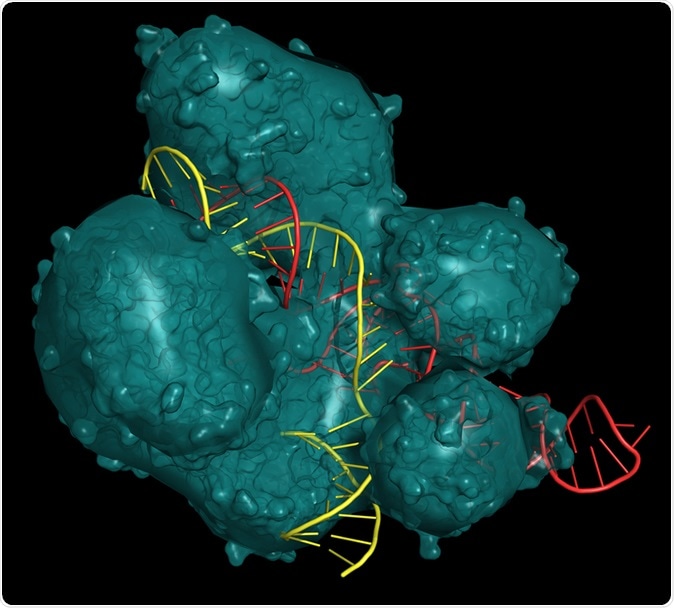A US Department of Defense commissioned study has found that there are several genetic-engineering tools that could be used to devise biological weapons in a short amount of time.
The extensive 221 page report says that tools itself could appear harmless and they could be put to good use such as creating genetically engineered disease-resistant plants or make genetically engineered personalized medicines etc. However several labs and companies are working towards making “synthetic-biology-enabled weapons.”
This latest report authored by 13 experts in the field, comes from the National Academies of Sciences and is the first that outlines national security threats from biological weapons using genetic engineering tools such as gene editing tool CRISPR. The report is titled, “Biodefense in the Age of Synthetic Biology” and was published yesterday.

CRISPR/Cas9 system for editing, regulating and targeting genomes. The Cas9 protein uses a gRNA (guide RNA) sequence to cut DNA at a complementary site. Molecular structure - RNA in red, DNA in yellow. Image Credit: ibreakstock / Shutterstock
Gigi Gronvall, a public health researcher at Johns Hopkins and a co-author of the report says that the risk expands when synthetic biology comes into play. This report, Gronvall says, is a framework that could evaluate the extent of risk posed by these tools and their misuse. Earlier in 2016 the US intelligence community had mentioned gene editing as one of the potential biological weapons of mass destruction. D. Christian Hassell, deputy assistant secretary of defense for chemical and biological defense, who was part of this new report explains that there are quite a few varied opinions regarding this from experts. This report, he said, was commissioned to gather all the opinions from the experts in one place. He added that at present the military does not view “synbio” as a major threat but is gearing up to prepare for this because soon it may pose a threat. Vaccines for example, against biological weapons such as altered viruses may take time to develop and early preparation is warranted.
The report outlines what could be done when synbio techniques are applied and the likelihood of populations that could be affected. Recreation and alteration of deadly viruses using genetic engineering is viewed as the greatest potential threat. Altering and making deadly bacteria more dangerous and resistant to treatment, creating harmful biochemicals at site of attack or within the body, altering human genome, altering human healthy bacterial microbiome, altering human immune systems, creating new pathogenic organisms are some of the concerns that have been expressed in the report. While some of these are of “highest concern”, some including creating new pathogenic organisms are of “lower concern” at the moment. The report says that some of these may appear to be too fantastic but with rapid advances in gene editing tools like CRISPR, it could not be entirely impossible. CRISPR could be used to modify human genomes to cause several diseases including cancer.
One of the scenarios in this report is when a terrorist group wants to use these altered and engineered viruses to different parts of the world and attempt to create a pandemic. The results could be deaths of over 150 million people within a year before a suitable vaccine could be made to fight the bio-weapon. The scenario showed that the response of the populations to the epidemic of an altered microbe would be similar to that when a natural pandemic such as influenza occurs.
The report was commissioned by the US military which itself remains one of the largest sponsors of synbio technologies. Experts believe that reports such as these could also trigger a “bio-weapons race” among nations. They explain that governments should keep a close eye on what is being achieved in this field just like they did on advances in physics and chemistry developing weapons of mass destruction during the Cold War times.
The report says that those very tools that could create these bio-weapons could be used to make effective and better vaccines and medicines to fight the synbio weapons. The techniques could be used to make diagnosis of these infections easy and improve disease surveillance and quarantine to prevent its spread.
Source:
National Academies of Sciences, Engineering, and Medicine. 2018. Biodefense in the Age of Synthetic Biology. Washington, DC: The National Academies Press. https://doi.org/10.17226/24890. https://www.nap.edu/catalog/24890/biodefense-in-the-age-of-synthetic-biology